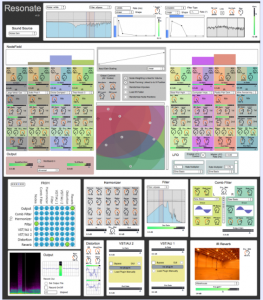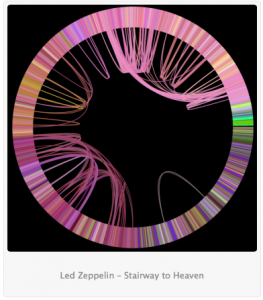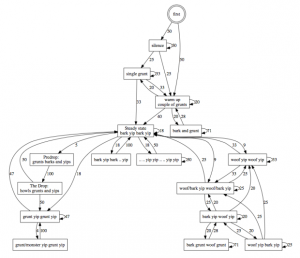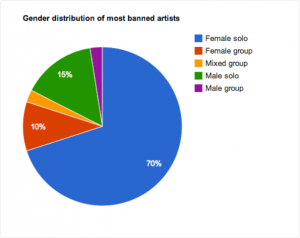Using Google speech API and Pandorabots API
(updated 1/21/2024)
all of these changes are local – for now.
replace path to sox with /opt/homebrew/bin/sox in [p call-google-speech]
Also had to write a new python script to convert xml to json. Its in the subfolder /xml2json/xml4json.py
The program came from this link: https://www.geeksforgeeks.org/python-xml-to-json/
Also inside [p call-pandorabots] the path for this python program had to be explicit to the full path on the computer. this will vary depending on your python installation.
Also, note that you must install a dependency with pip:
pip install xmltodict
After all that I was actually able to have a conversation. These bots seem primitive, but loveable, now compared to chatGPT. Guess its time for a new project.
Also the voice selection for speech synth is still not connected
(updated 1/21/2021)
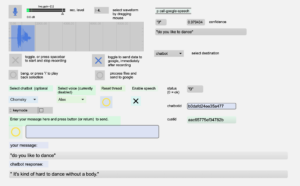
This project is an extension to the speech-to-text project: https://reactivemusic.net/?p=4690 You might want to try running that project first to get the Google speech API running.
features
- Everything runs in one Max patch
- menu selection of chat bots and voices (currently disabled)
- filtering of non speakable text (like HTML tags)
- python script now runs under current directory of patch using relative path
- refinements to recording and chatbot engines
files
main Max patch
- robot-conversation7.maxpat
abstractions and other files
- clean-html.js
- xml2json/xml2json.py
- JSON-google-speech.js
- JSON-pandorabot.js
- ms-counter.maxpat (timer for recording messages)
- pandorabots.txt
Max external objects
- [shell] from https://github.com/jeremybernstein/shell/releases/tag/1.0b2 download this external and add the folder to Options | File Preferences, in Max
external programs:
sox: sox audio conversion program must be in the computer’s executable file path, ie., /usr/bin – or you can rewrite the [sprintf] input to [aka.shell] with the actual path. In our case we installed sox using Macports. The executable path is /opt/local/bin/sox – which is built into a message object in the subpatcher [call-google-speech]
get sox from: http://sox.sourceforge.net
Instructions
- Open robot-converstaion7.maxpat and turn on audio
- select chatbot as destination
- Press the spacebar to start recording.
- Ask a question.
- Press the spacebar to stop recording.
notes
Need to fix the selection of voices.
revision history
- 1/21/2021: complete rewrite for Max8 and Catalina
- 4/24/2016: need to have explicit path to sox, in the call-google-speech subpatch. In my Macports version the path is /usr/local/opt/bin/sox.
- 6/6/2014: re-added missing pandorabots.txt (list of chatbots) – also noticed that pandorabots.com was not available. May need to look for another site.
- 5/11/2014: The newest version requires Max 6.1.7 (for JSON parsing). Also have updated to Google Speech API v2.
- Note: Instructions for getting a real key from Google – which will need to be inserted into the patch. http://www.chromium.org/developers/how-tos/api-keys – so far we have been getting by with common keys from a github site (see notes in next link)
Also please see these notes about how to modify the patch with your key – until this gets resolved: https://reactivemusic.net/?p=11035
- This project added to internetsensors 3/26/2014
- This is an update to the robot conversation project https://reactivemusic.net/?p=4710


